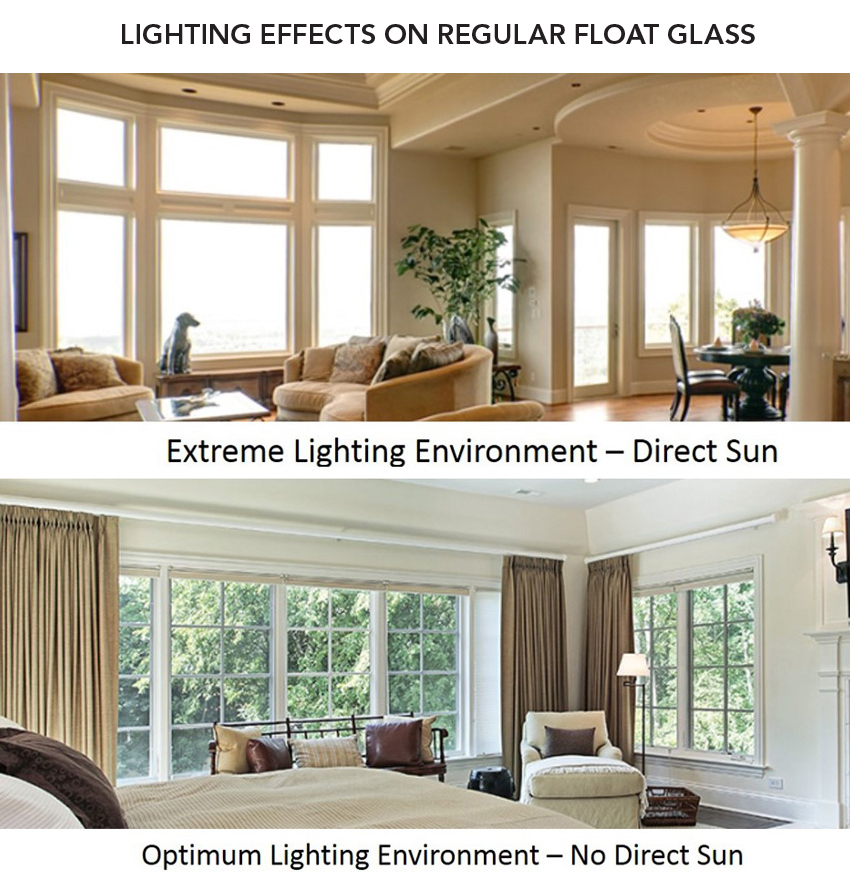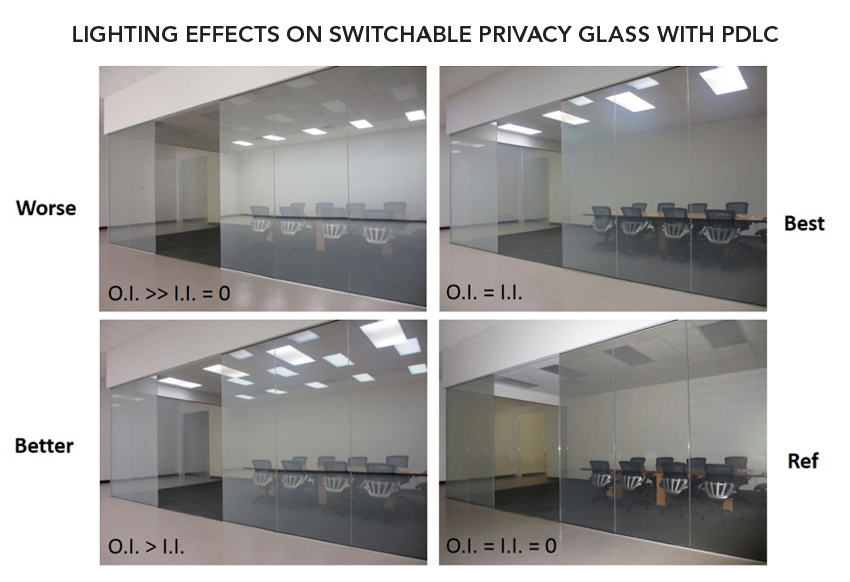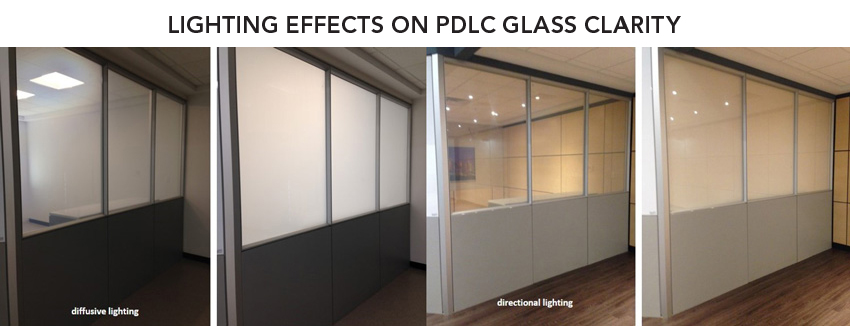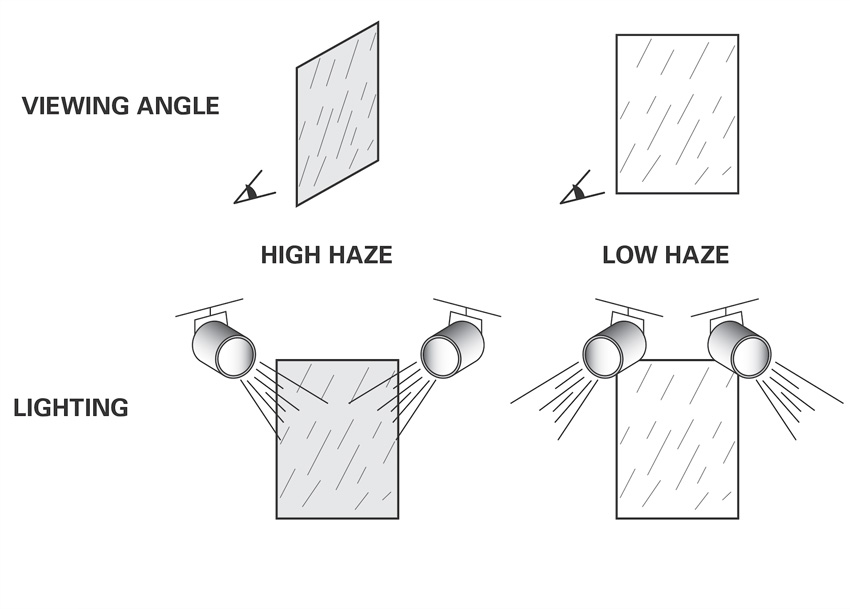Smart Glass Solutions for Interior Commercial Structures
Lighting Conditions and Haze in Regular and PDLC Glass
As previously noted, one of the most common misconceptions relates to clarity of the PDLC technology because of customers’ preexisting expectation that the optical clarity will be the same as with regular float glass. That level of clarity is not possible with PDLC products, however, as they contain liquid crystal materials that optically manipulate light; therefore, glass products with PDLC technology naturally have some level of haziness to them (even regular glass has some haze, albeit at much more extreme lighting conditions). This haziness effect with PDLC glass products is magnified at larger viewing angles and with certain high-intensity lighting conditions. This, however, does not detract from its wide-ranging use as a practical alternative.
Clarity Standards and Guidelines
The photos below illustrate the haze effect in both regular and PDLC glass. The first set of images shows how hazy regular glass can appear in direct sunlight compared to a scenario with no direct sun. The second set of images (of the conference room) shows how the different lighting conditions affect the PDLC panels. The acronyms O.I. and I.I. stand for outside intensity and inside intensity, respectively, as it pertains to the light intensities outside and inside the conference room. There are four scenarios depicted here: 1) the lighting condition is worse when the O.I. is much greater than the I.I.; 2) the haze improves when the O.I. is only slightly greater than I.I.; 3) the optimum haze condition is when the O.I. is the same as the I.I.; and 4) the best/reference condition for haze is when no lights are on. It is advisable, then, for architects and designers to consider the placement of any lighting near the privacy glass.

Photos courtesy of Polytronix, Inc.
Lighting has a big effect on the clarity of glass. Even regular, monolithic glass will exhibit some haze when exposed to extreme lighting conditions. The haze effect is magnified, especially in direct sunlight.

Photos courtesy of Polytronix, Inc.
The photos here were taken at the same distance and angle for a precise measurement of lighting conditions. Here is how specific lighting conditions affect haze.
1. Worse lighting conditions: Lights that are only on the outside of the conference room will cause an imbalance in light intensity. This will increase the haze.
2. Better lighting conditions: Lights on the outside of the conference room are higher in intensity than on the inside. This will result in a slight haze.
3. Best lighting conditions: Lights on the inside of the conference room and outside are evenly balanced in intensity and sufficiently diffused at appropriate distances.
4. Low haze in dark state (all lights off): No lights on the inside or outside of the conference room will result in little haze.
PDLC glass is also a light diffuser and the clarity can be impacted based on an imbalance of light intensities in the surroundings. The image below shows the difference in clarity between using fluorescent lighting (diffusive, large area, public) and LED lighting (directional, focused, small area, more intimate).

Photos courtesy of Polytronix, Inc.
Using fluorescent lighting (two photos on left) or LED lighting (two photos on right) will affect the clarity and appearance of the PDLC glass. Appearance is also used to address the “whiteness” in the opaque mode with the two different lighting scenarios.
Additional Haze Factor Considerations
As discussed, PDLC glass contains liquid crystal (LC) material, therefore it inherently possesses some level of “haziness” and would not exhibit the same level of clarity as regular float glass. In addition, the inherent haziness is increased at wider viewing angles and with big disparities in light intensities (see diagram below). This phenomenon is normal because typical PDLC film/glass is a light diffuser and will change in haze at varying viewing angles as well as lighting conditions, as previously noted.

Image courtesy of Polytronix, Inc.
Typical PDLC film/glass is a light diffuser and will change in haze at varying viewing angles as well as lighting conditions









